Europe 2004: Amsterdam ![]() and Scotland
and Scotland ![]()
The trip begins in beautiful Amsterdam. This city is mostly reclaimed from the ocean, starting about 700 years ago. There's not a lot of high ground in the "low countries", and as a consequence, the city is very flat. Much of the city is composed of canals ("grachts") around islands ("polders"). In my experience (limited to a few days in Amsterdam), bridges over the canals form the highest elevations in the city (other than the upper stories of buildings, of course).
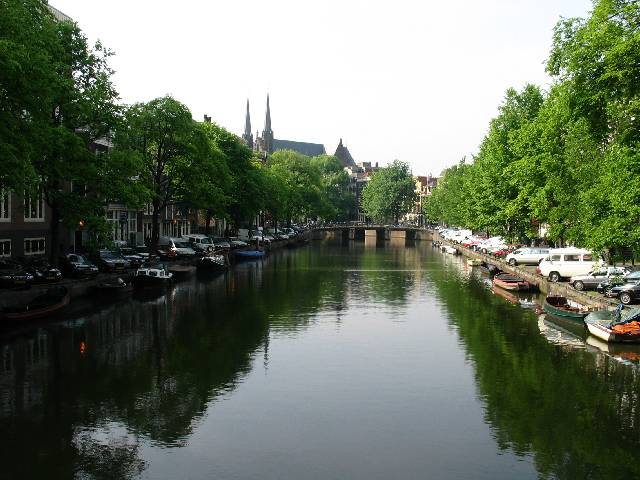
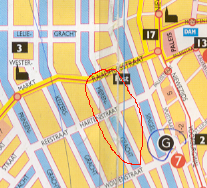
The canals are quite pretty, but you wouldn't want to swim in them, as they are dirty - some even describe them as open sewers (though they certainly don't smell). Interestingly, most of the streets along the canals don't have barriers, so it would be easy to fall, drive, or bike right in. Our bike tour guide said that something like 70 corpses turn up in the canals every year - many of them appear to have been inebriated at their time of demise. Unlike the litigious US, none of this seems to phase the Dutch. Kind of refreshing.
| Here is the Ann Frank house/museum on Prinsen-Gracht (in above map at "3"). The people are lined up waiting to enter the museum. The building on the left with the many windows was a jam factory, and an "annex" behind this building (not visible) is where Ann Frank and 7 others were hidden during the Nazi occupation in WWII. | ||
|
Interestingly, this museum has very few artifacts. There are only a few ID cards and letters that the museum has on display. There are a few continuous loop videos of interviews with people who helped with the hiding. The majority of the museum is the building itself, with various annotations taken from Ann Frank's diary. Definitely worth the visit, however.
This image shows the Bloemen Garten, an outdoor flower market along the Amstel River. Seems like just about every sort of plant or flower (or seed thereof) was available here.
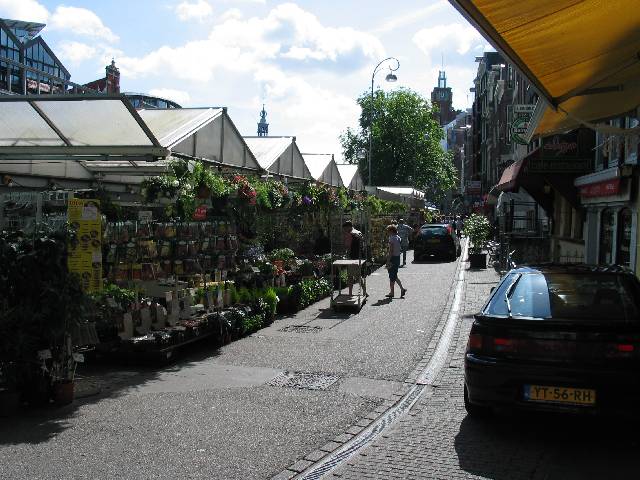

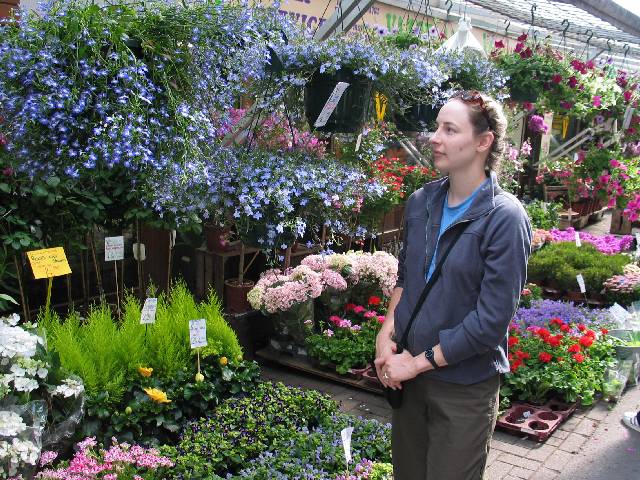
We took a bicycle tour on Friday (6/11/04), from Mike's Bike Tours. Our tour guide, Jeff, (standing in middle, red shorts) was a Canadian and very proud of Canada's role in liberating Amsterdam at the end of WWII.
Just a word now about bicycles in Amsterdam. Amsterdam is the city of bikes. There are some 750,000 residents and Amsterdam, and supposedly over 1 million bicycles. As I mentioned previously, the city is flat, so getting around on a bike is no sweat - so everybody does it. Also, there is a whole traffic infrastructure set up for bicycles. On any street but the smallest, there is a bike lane that is separate from the street and the sidewalk. (Stand in this bike lane at your peril!) At controlled intersections, there are separate signals for cars, bikes, and pedestrians.
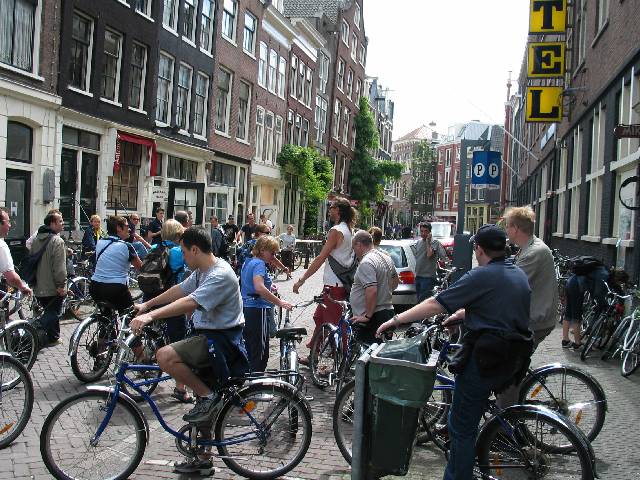

Here we are in front of Mike's Bikes with our group getting ready to start our tour!
You may notice the retro look to nearly all of the bicycles - this is apparently a result of the fact that the Nazis stole most of the bikes in Amsterdam when they fled from the incoming Canadians at the end of the war - since the Nazis didn't have any other mode of transportation. Those Dutch that were left with their bikes rode them around with Nazi defying pride. So retro bikes today are still a Nazi defying statement, and they're VERY popular.
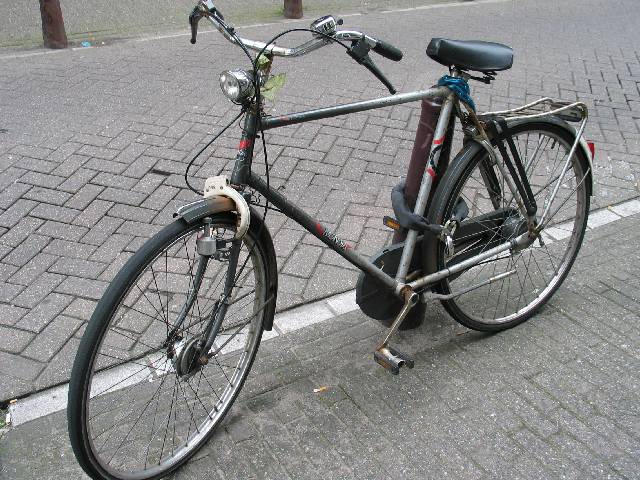
Note the full chain guard (I saw many folks in full business attire (men and women) riding bicycles - some talking on cell phones!). Also note the multiple locking mechanisms (bike theft is apparently rampant here), and thumb ringer (to warn those pesky tourists they're about to get run off the bike path - no joke!). Also, most bikes are equipped with a generator powered lighting system - both front and rear lights.
One of the first stops on the tour was at the end of a street where there was a statue (out of the picture, to the left) of a politician in Amsterdam's past who, as Jeff explained, introduced the concept of "least harm". This principle basically states that the punishment shouldn't inflict any more harm than the original crime did. This legal principle opens up the door to the marijuana use in the city (country?). Though pot use is illegal, it is tolerated as long as you're not bothering anybody. Harder, more addictive drugs tend to up the level of "harm" by increasing associated crime, so these drugs are not tolerated.
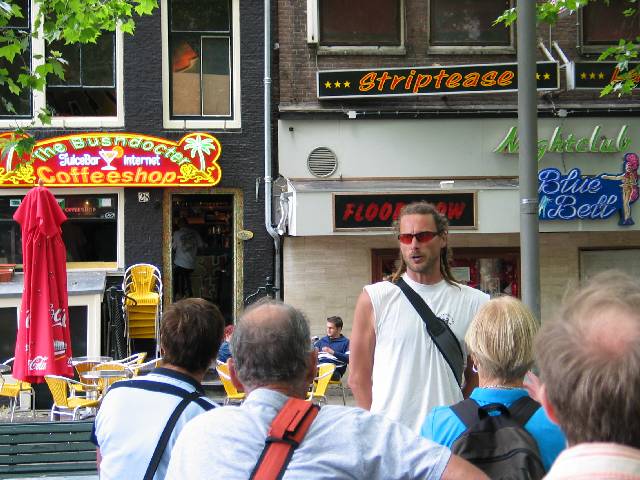
Behind Jeff, you can see a "Coffee Shop", which is where you would go to purchase and enjoy your pot, were you so inclined.
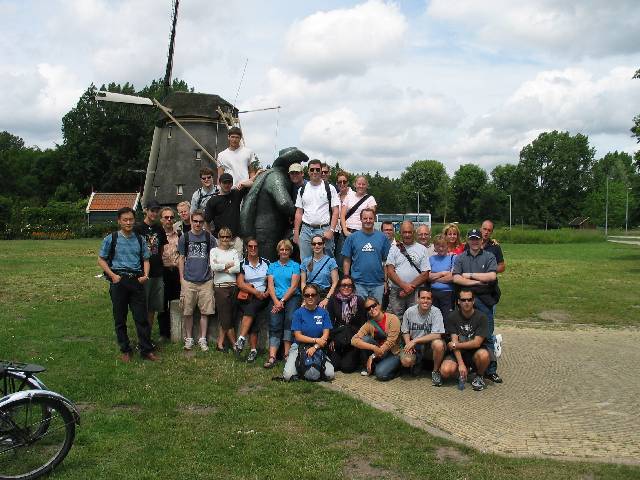
Here's the tour group at our obligatory windmill stop on the tour. Windmills used wind power to drive an Archimedes screw down below the ground. The ground water that was pulled up was dumped into the river in order to lower the water table and reclaim land. Interestingly, windmills were also used as signaling devices during WWII as they are large and the country is FLAT (have I mentioned that?). By attaching colored flags, messages could be sent. The Nazis apparently never caught on.
Our next stop was clearly also made for tourists - a farm where cheese and clogs are made. The mechanized way of making clogs works much like you make a duplicate key down at the hardware store. One machine (far right edge of picture) handles the outside, and the other (center), routes out the inside. In this machine, the left clog is the master, and the router bit is completely smooth. The right clog is being made, and the router bit is sharp! The operator grabs the handle protruding toward me and works the smooth bit around inside the master clog, and the sharp bit routes out the new clog to the same interior shape. The whole process only takes a couple of minutes.
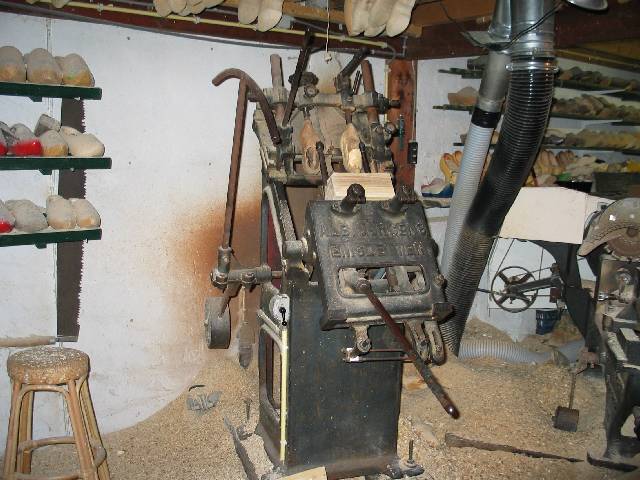
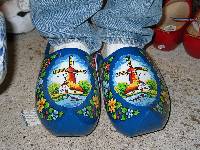
Here's a picture of our hotel (nothing special). Observe the bike path (in use!) that is visible behind the bike rack but in front of the sidewalk. The street (for cars) is in front of the bike rack (not visible). (This hotel is at the "G" you see on the maps.)

Our canal tour provided a unique perspective on the city. Somehow, the city seems a lot older when you're looking at the undersides of the various bridges up close.
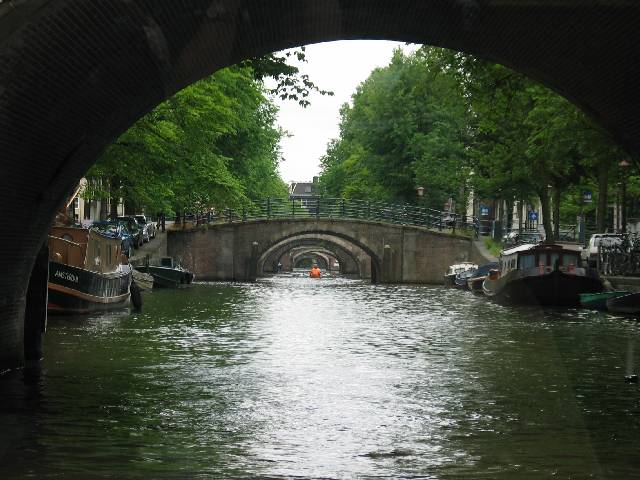
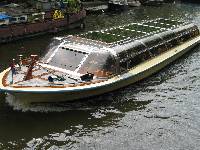
Here's a view down one of the smaller canals - and a canal tour boat - just made for getting under those bridges!
Here are some typical Amsterdam houses. Actually, most of them I saw wouldn't have anything in the way of a front yard as these do - but these were in a nice neighborhood. Note the hook protruding from the top of each house - used to hoist furniture up and into the windows since the staircases inside are too narrow to move furniture through. Pretty much every house has one of these hooks.
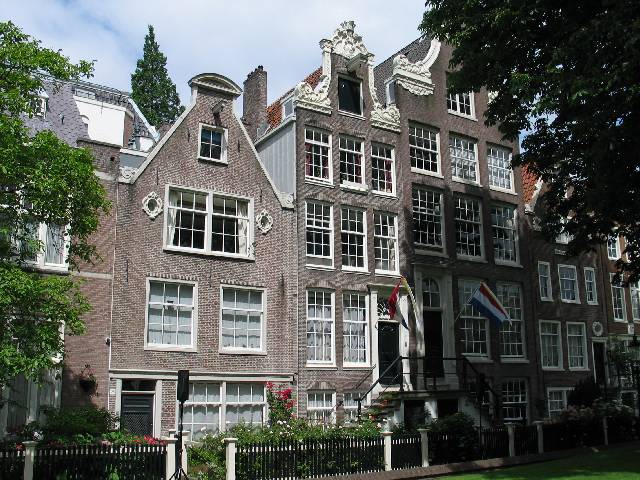

One of the main shopping districts was not too far from the hotel. This brand caught my eye, though I didn't feel much marketing pull for some reason...
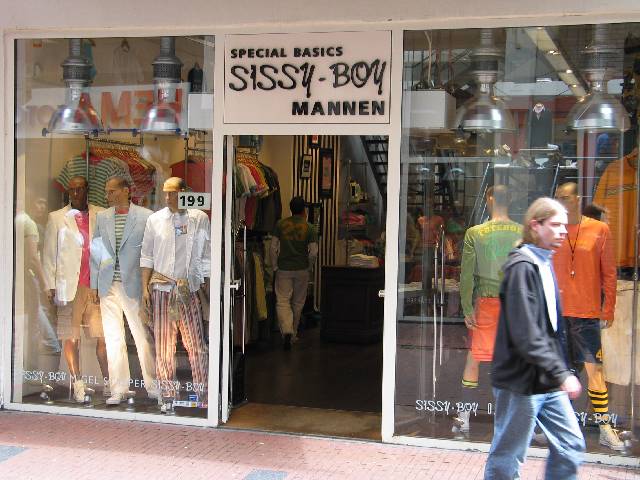
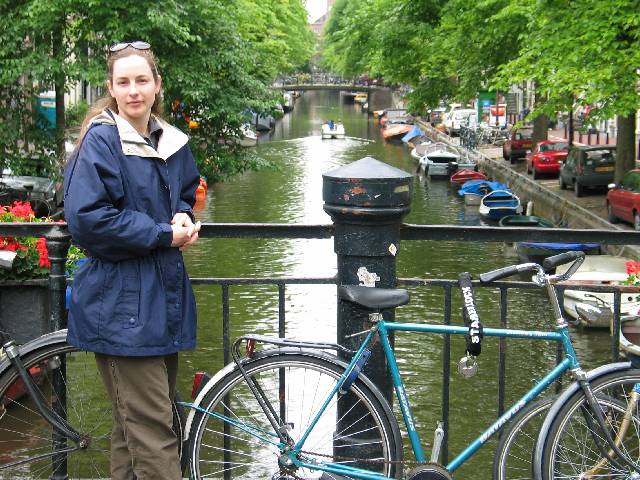
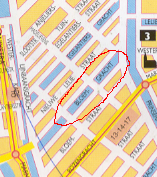
One last shot of Jen overlooking Bloemen-Gracht ("Flower Canal") before we head off to Scotland. This area of town was just a few blocks from our hotel, and very picturesque.
On to Scotland!
Here is the whole map of the city center so you can get an idea of where the pieces fit in:
